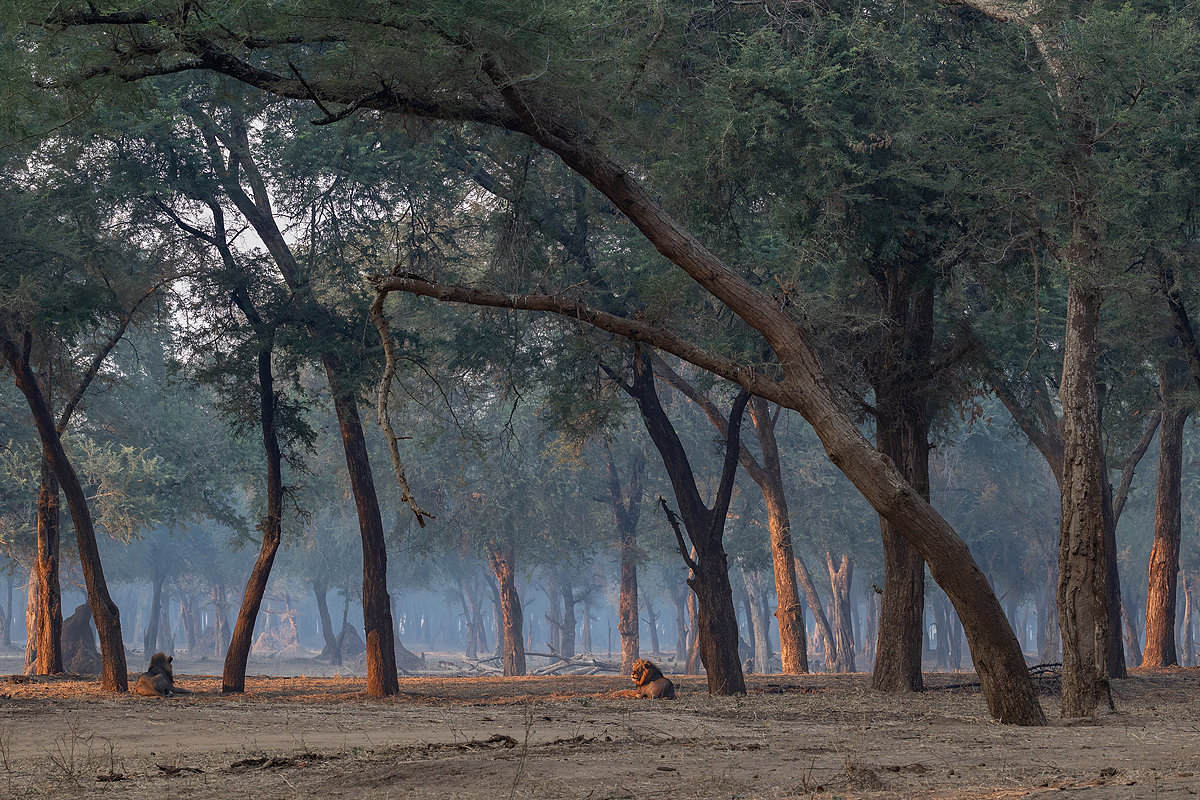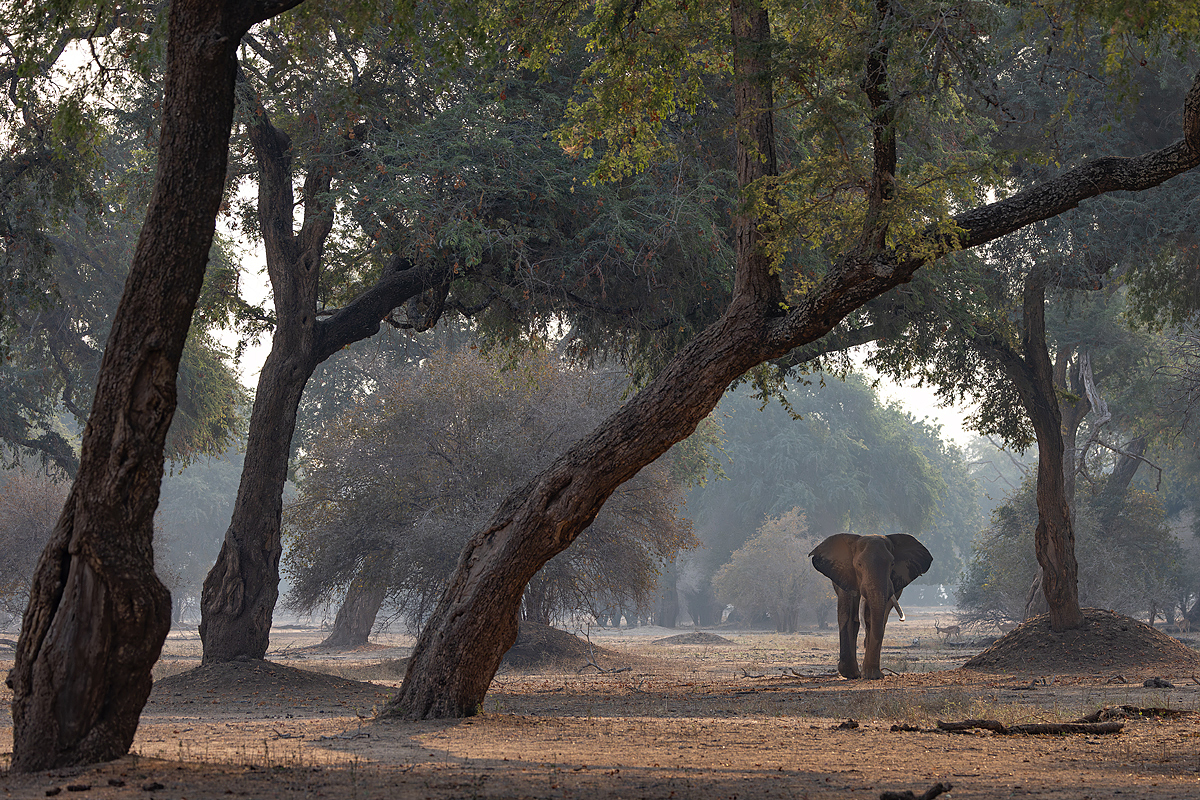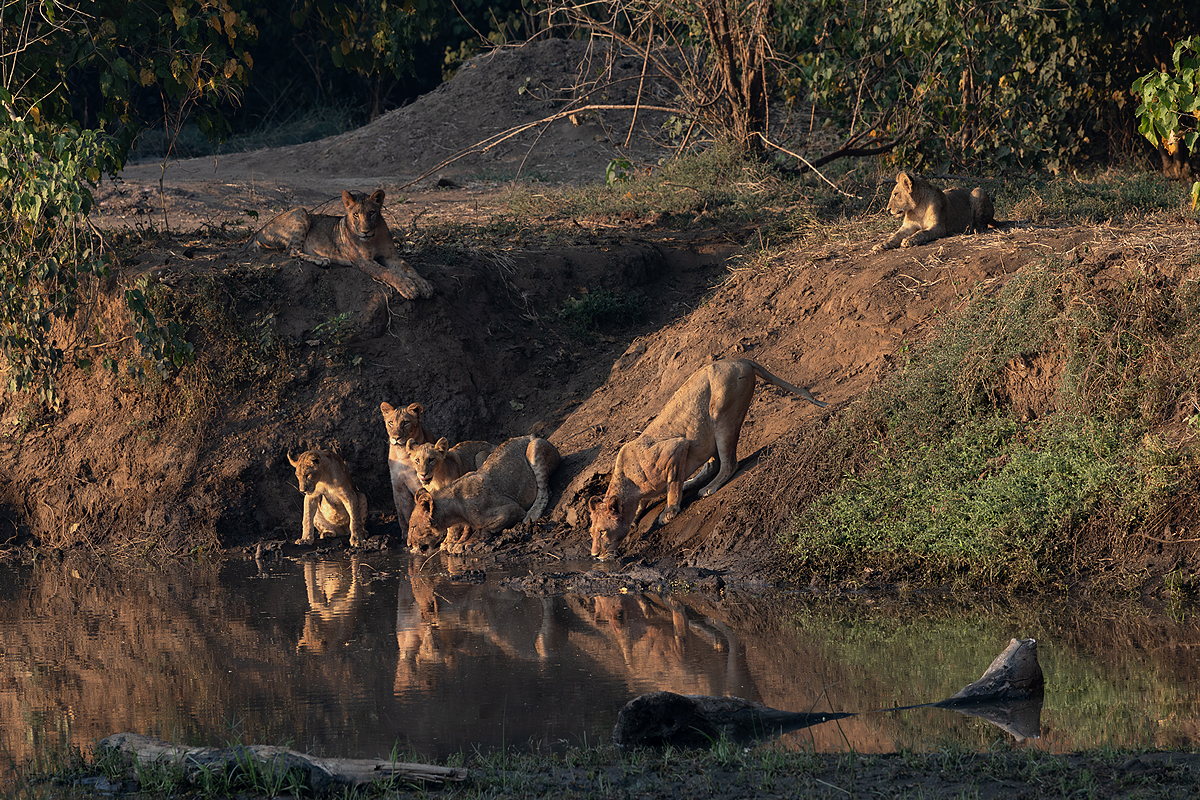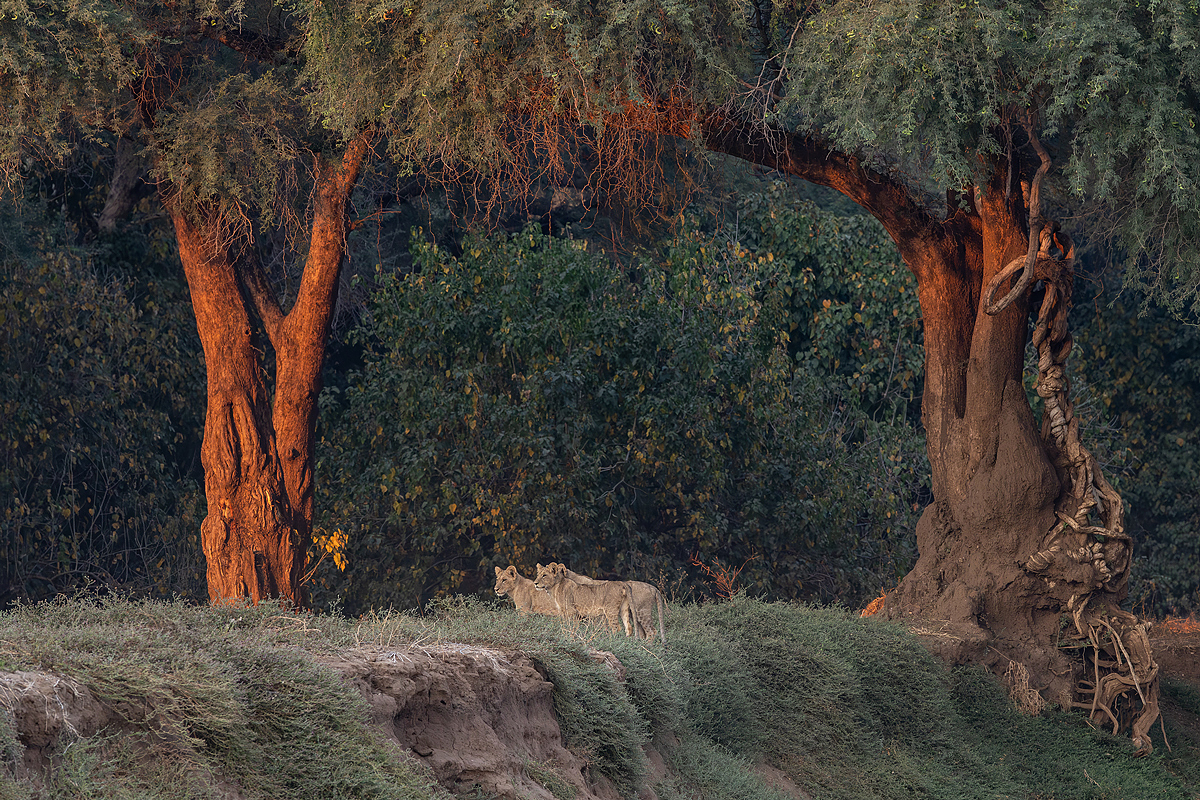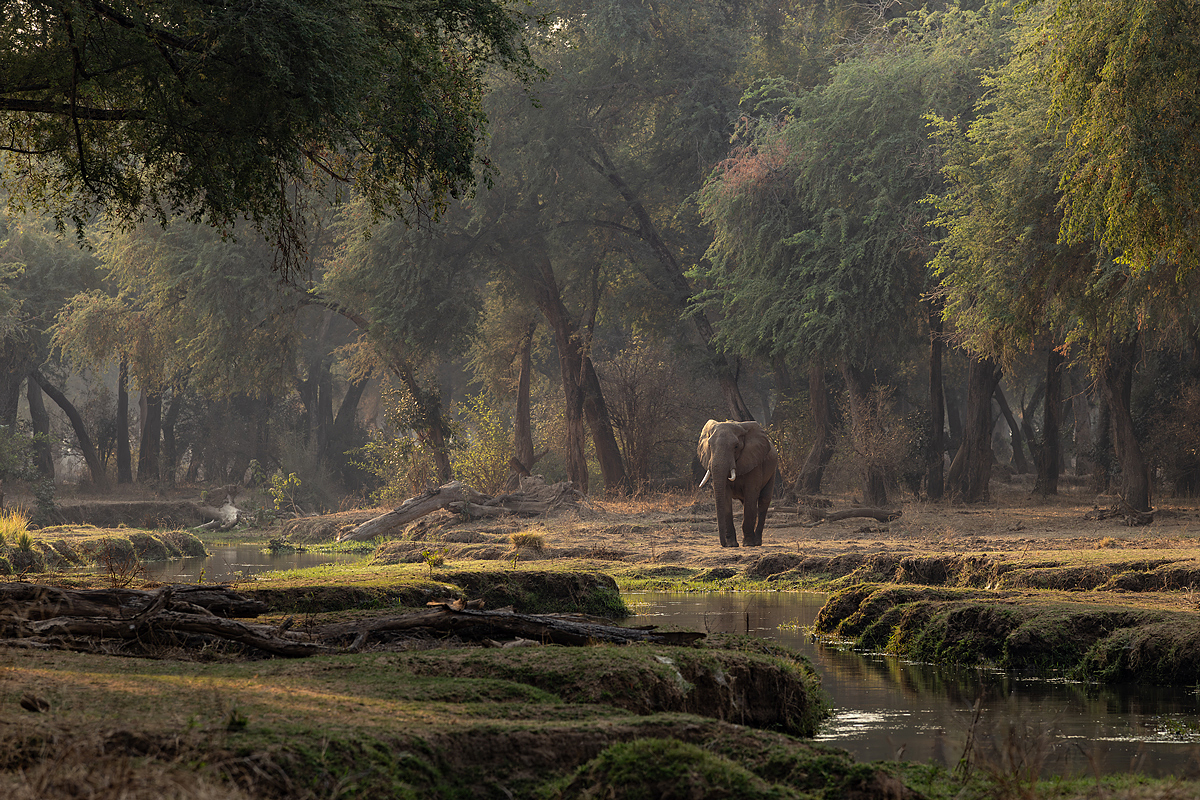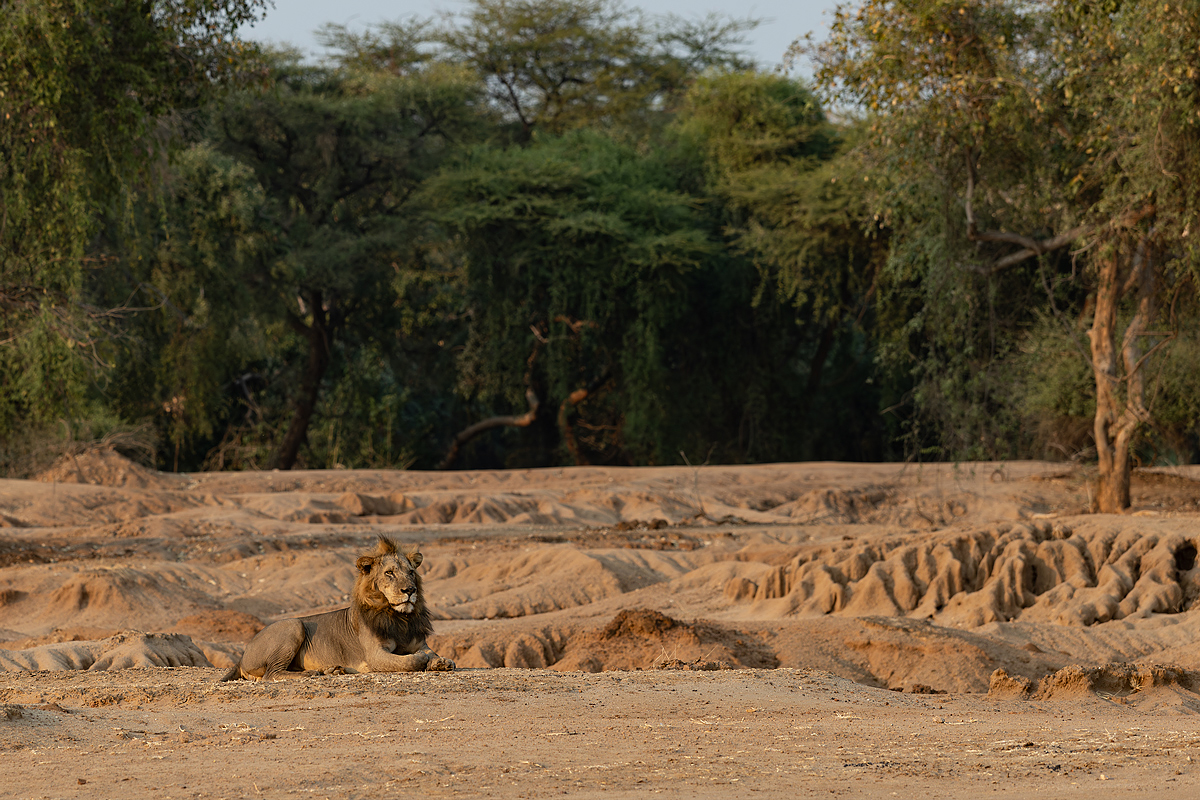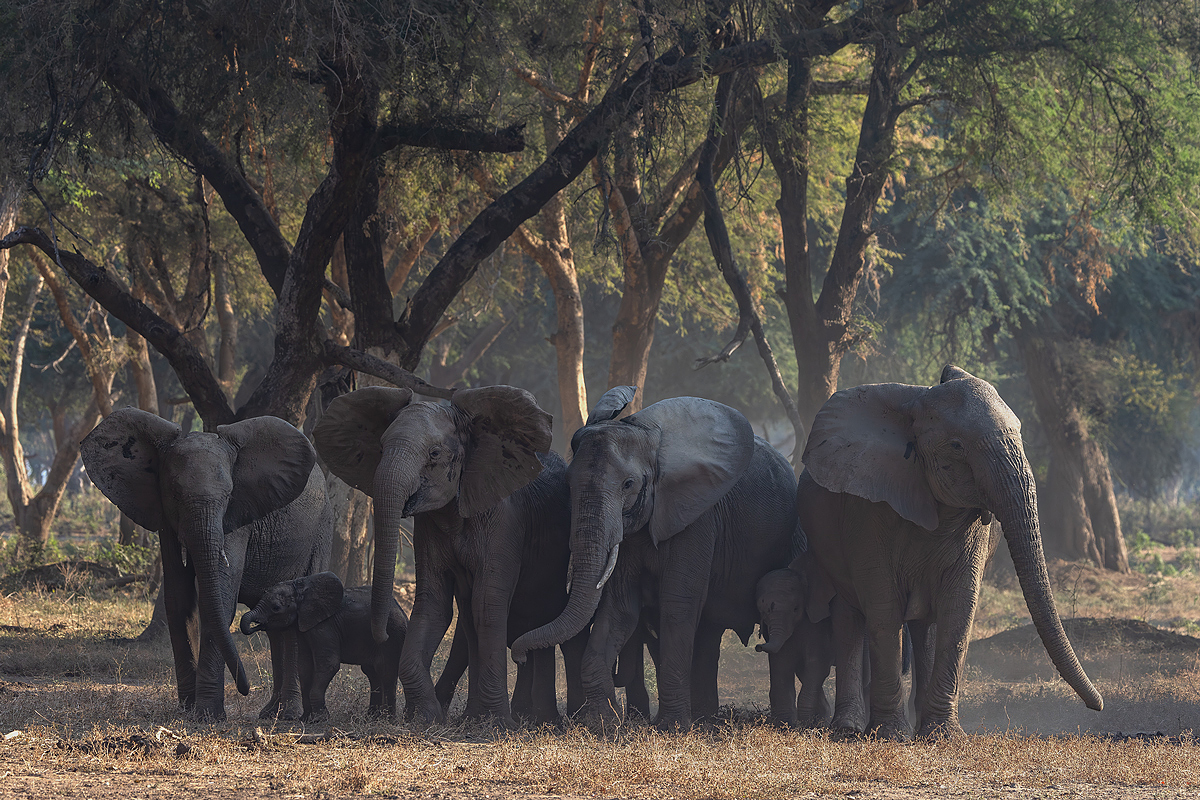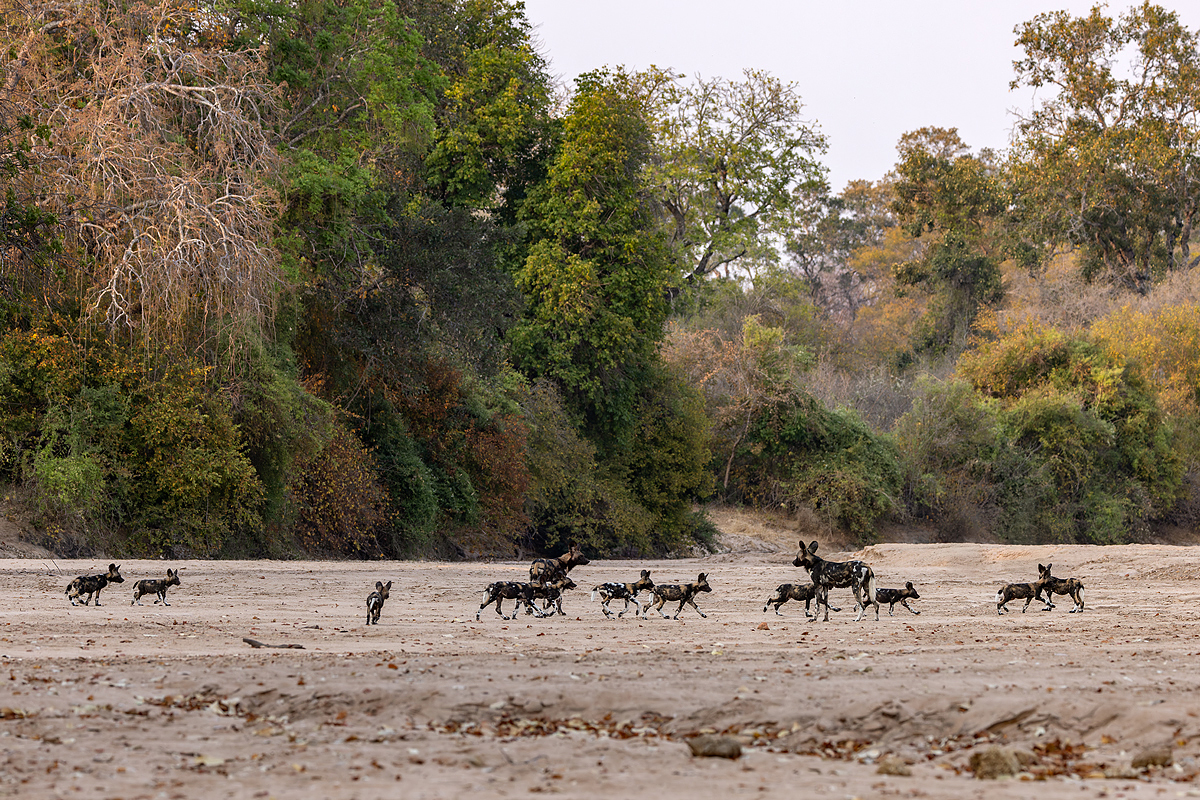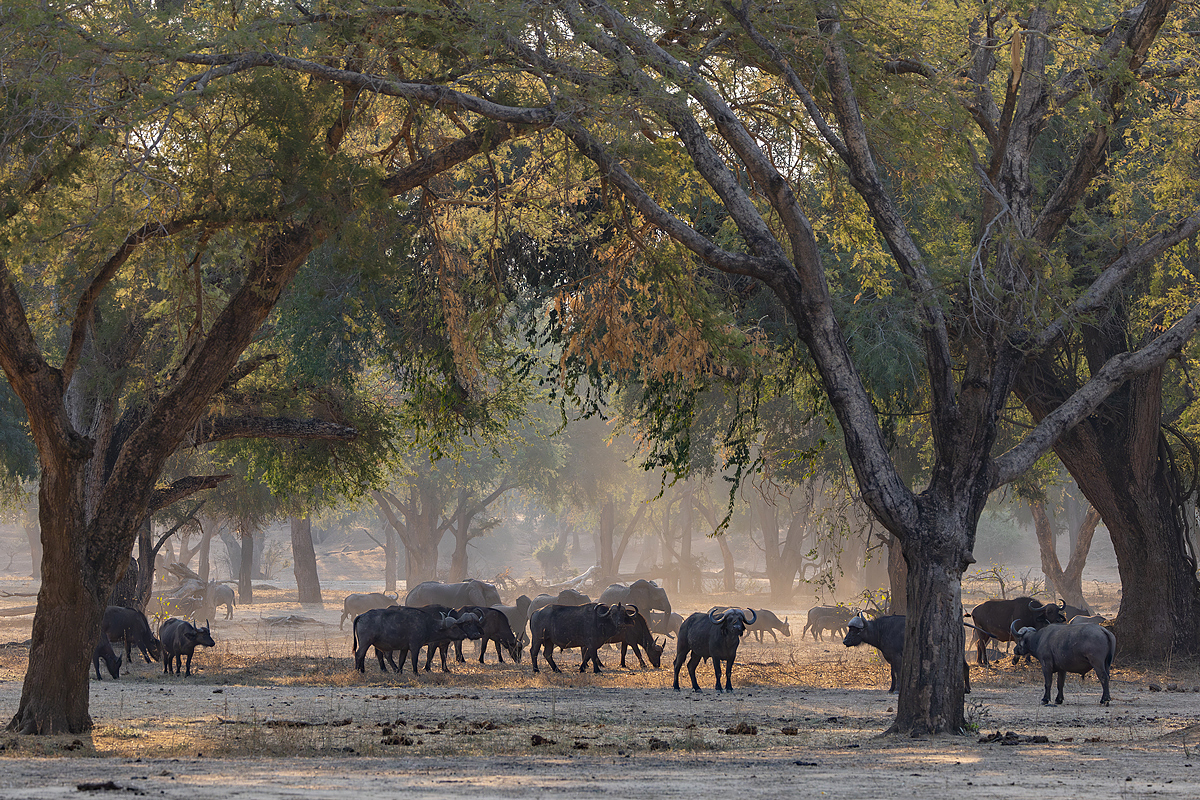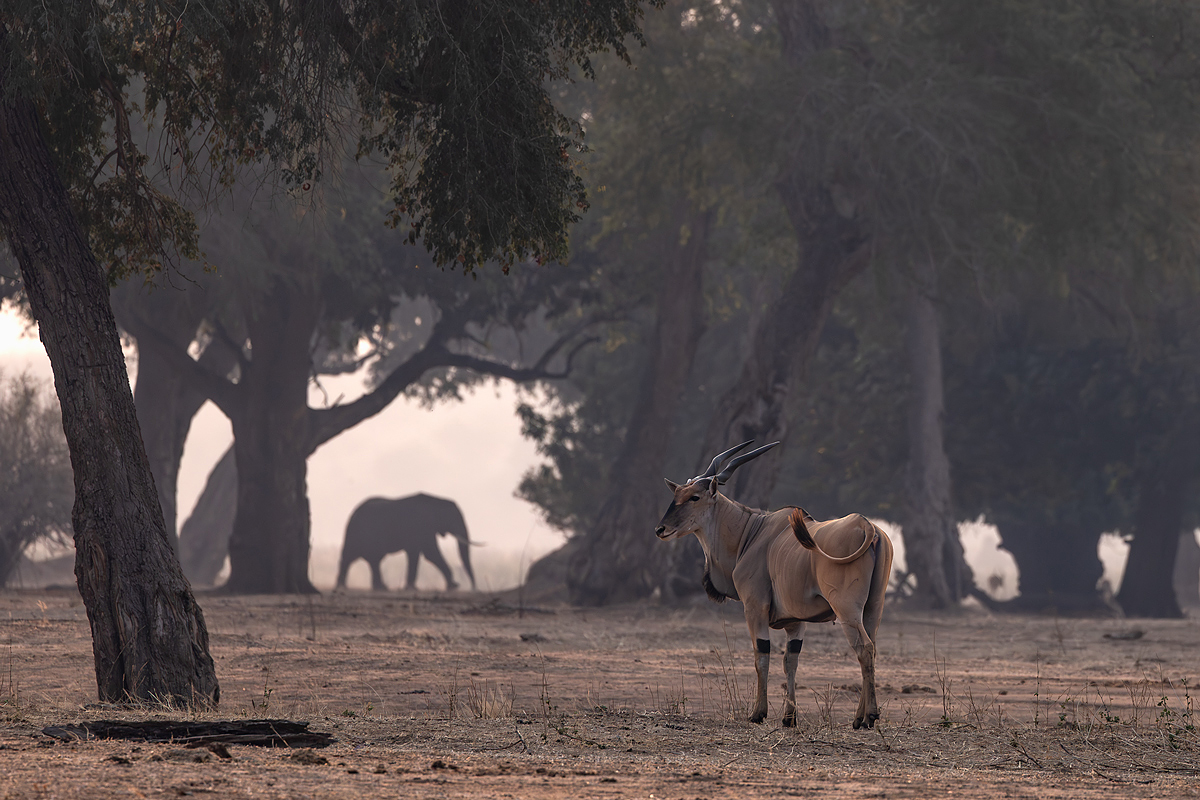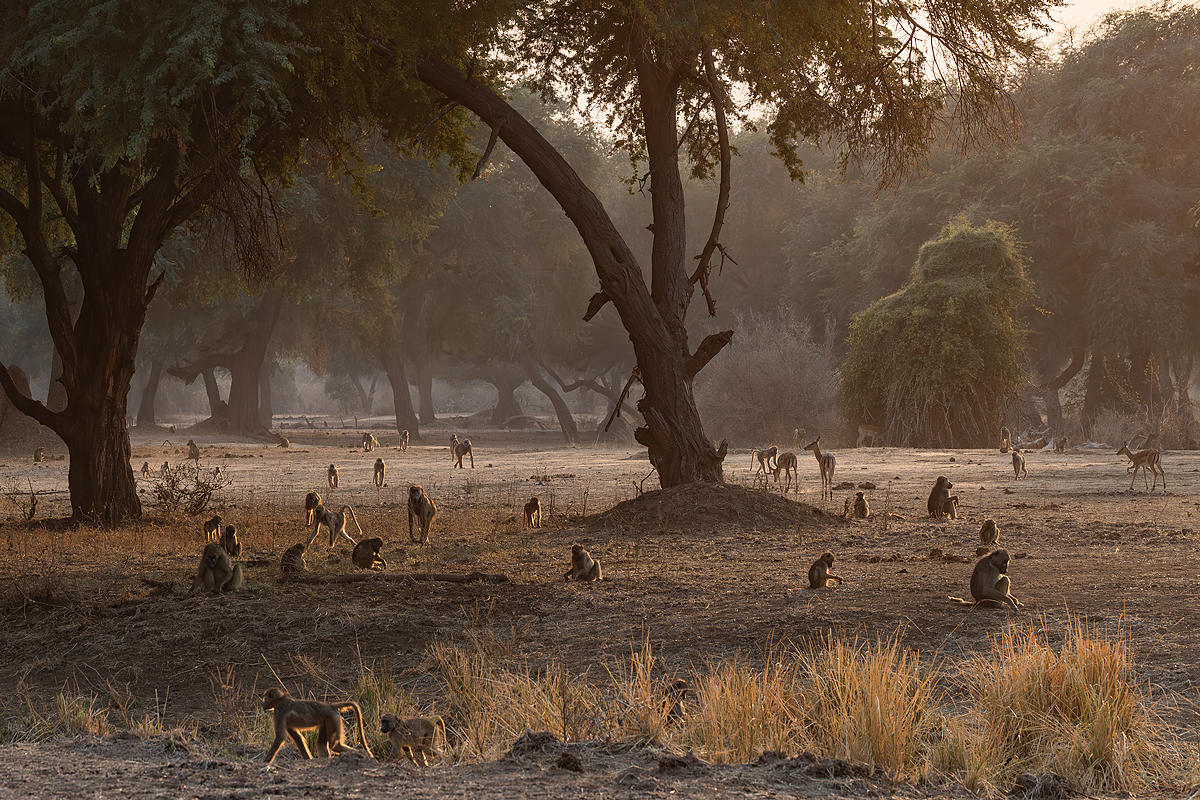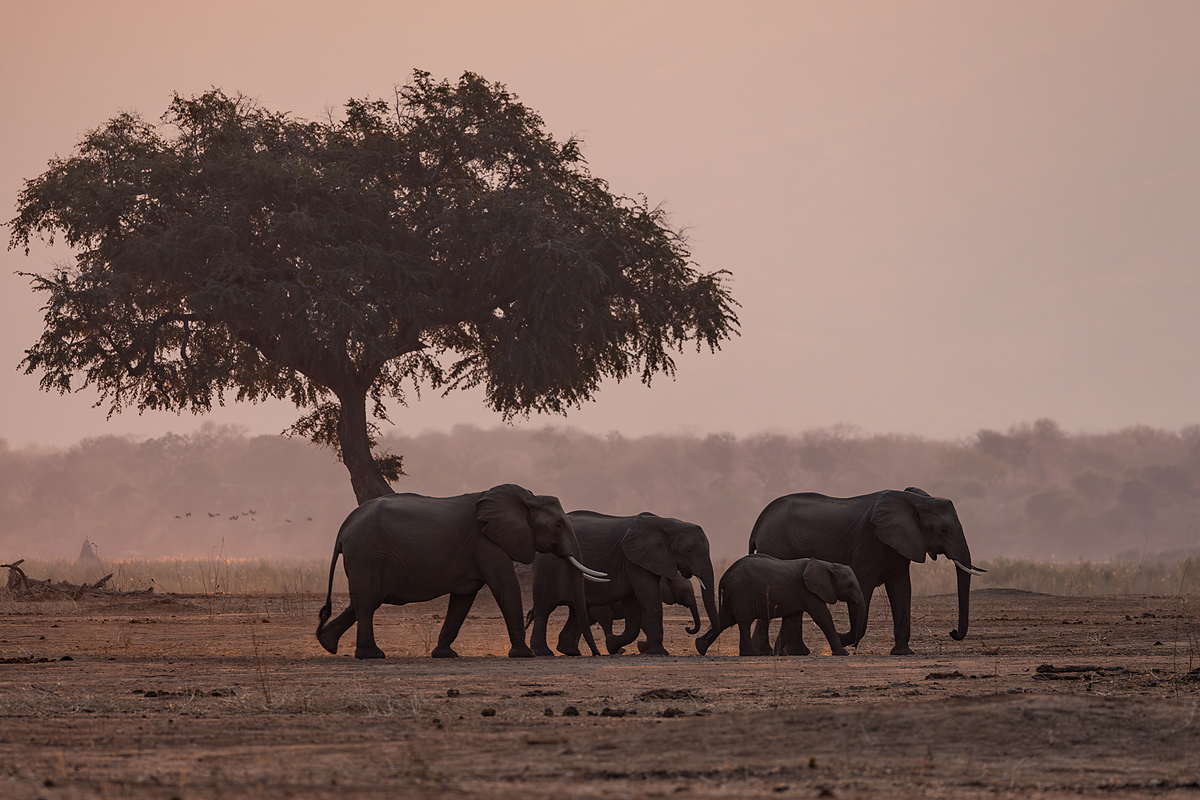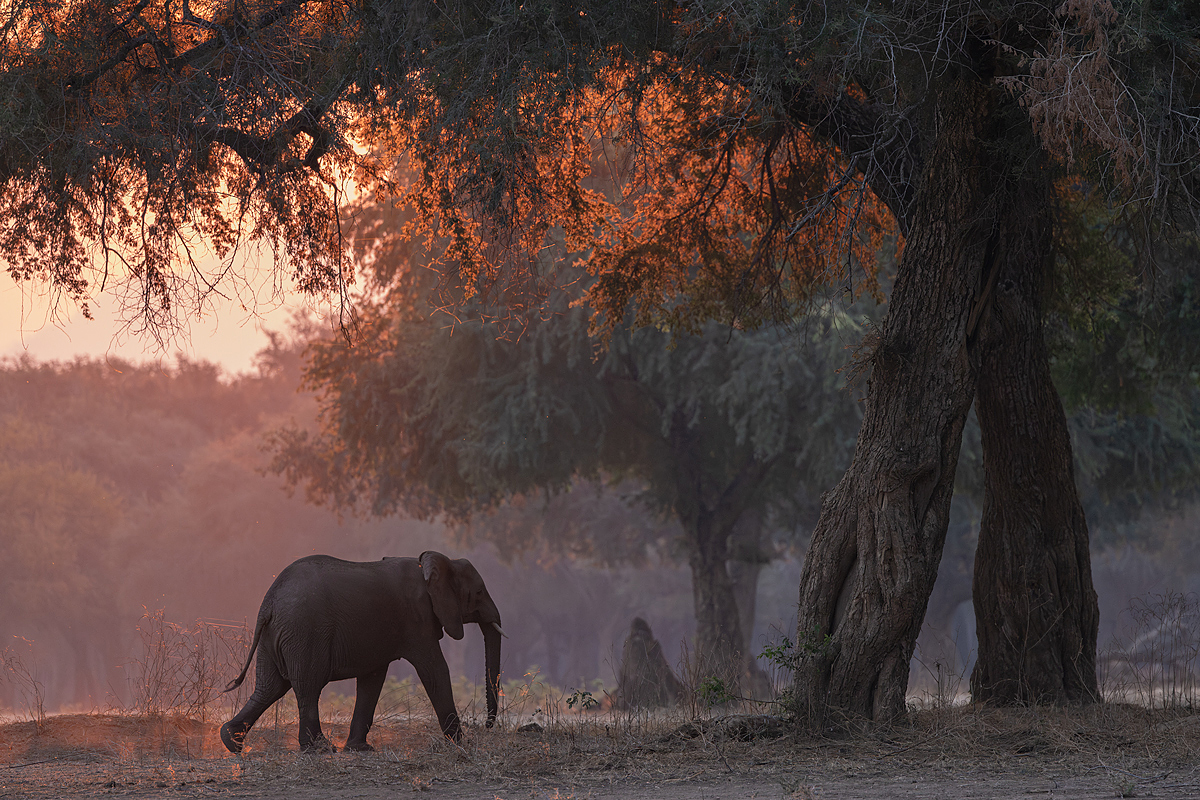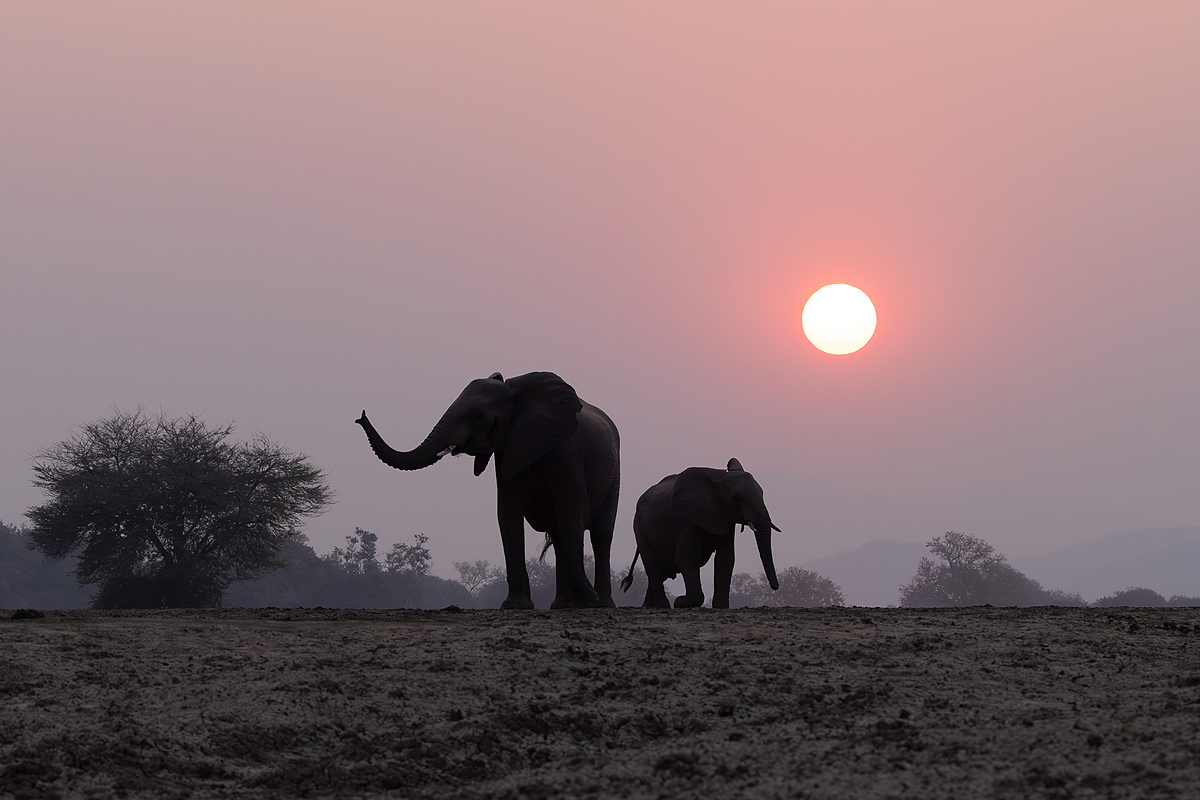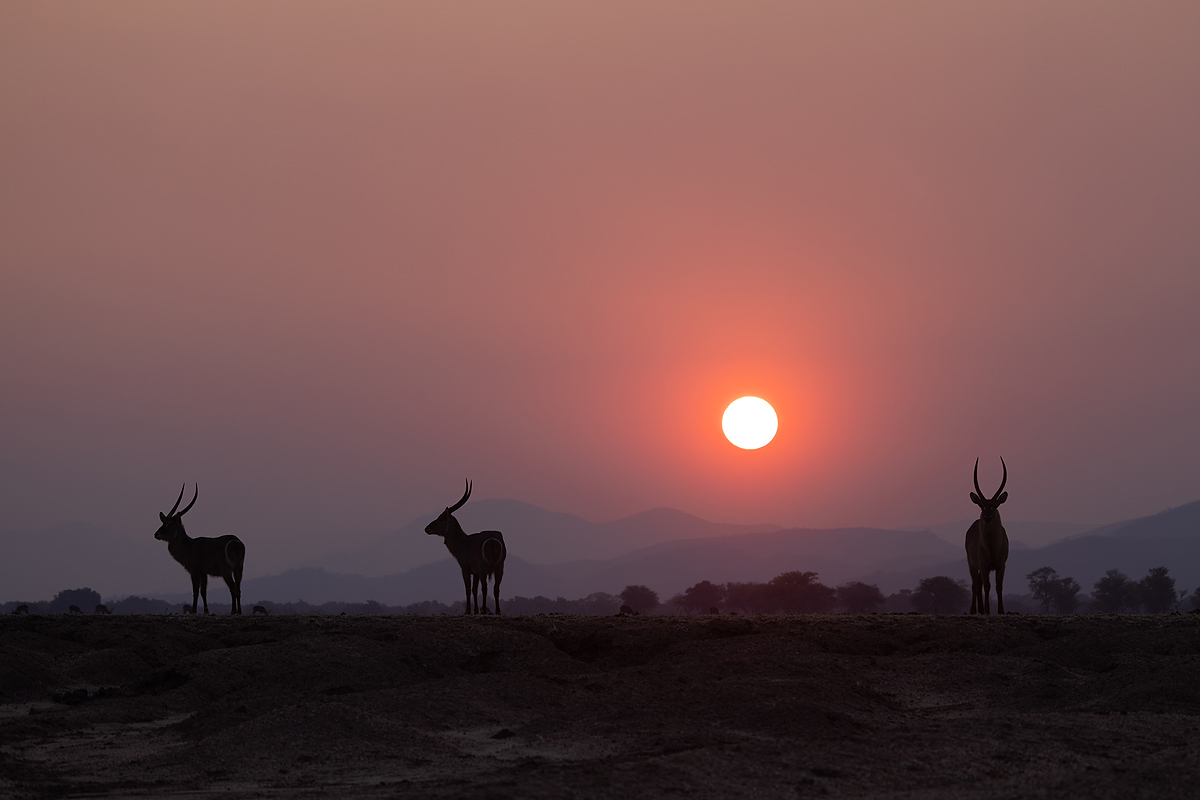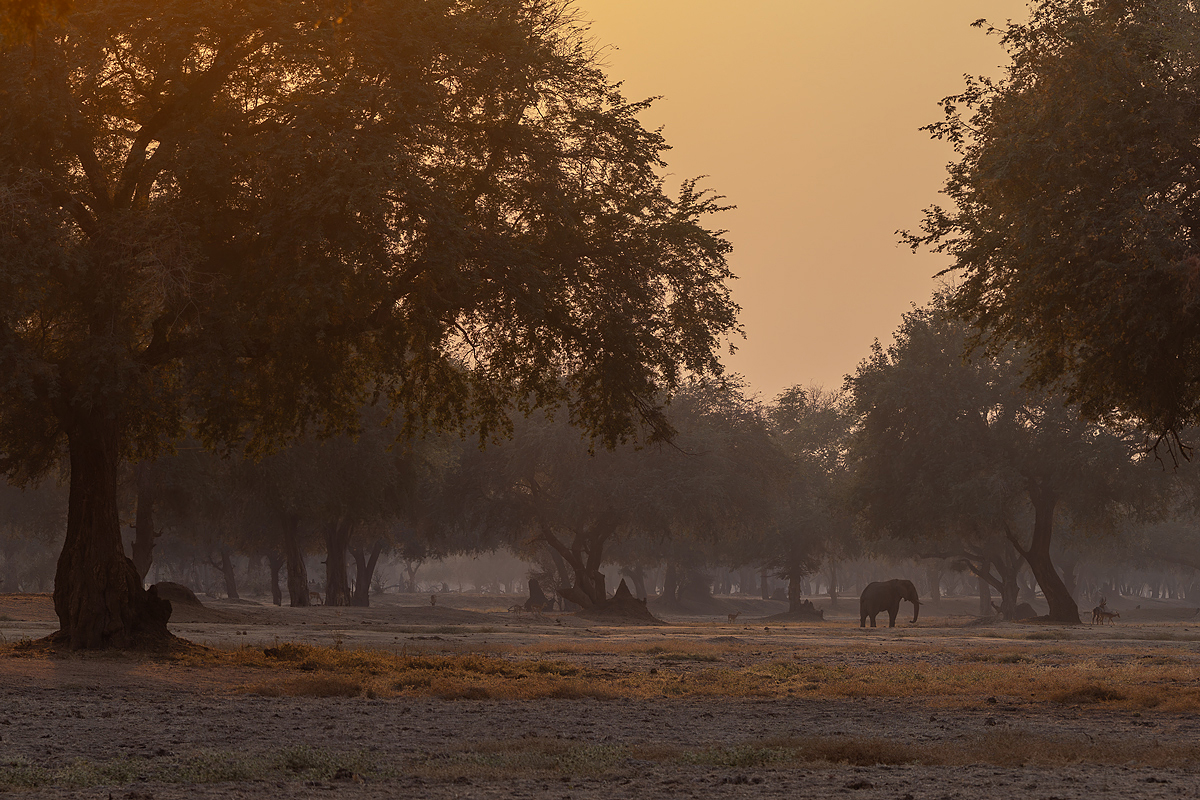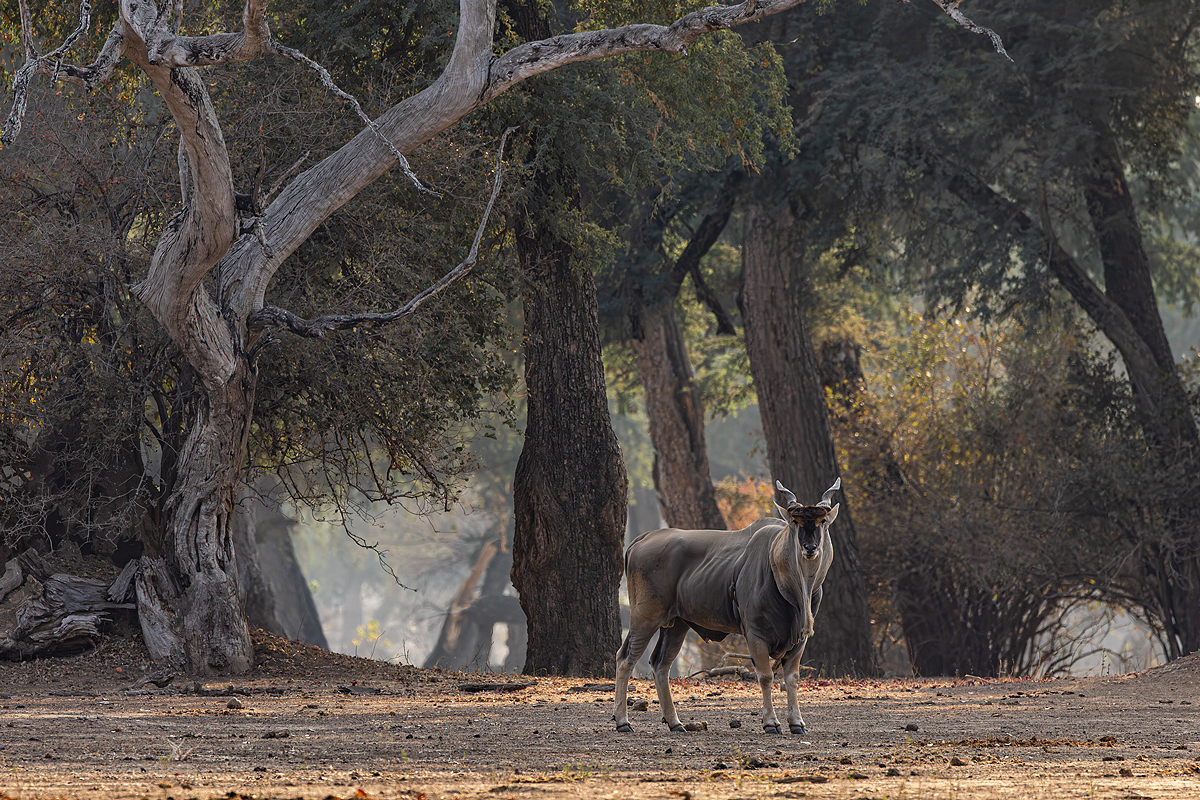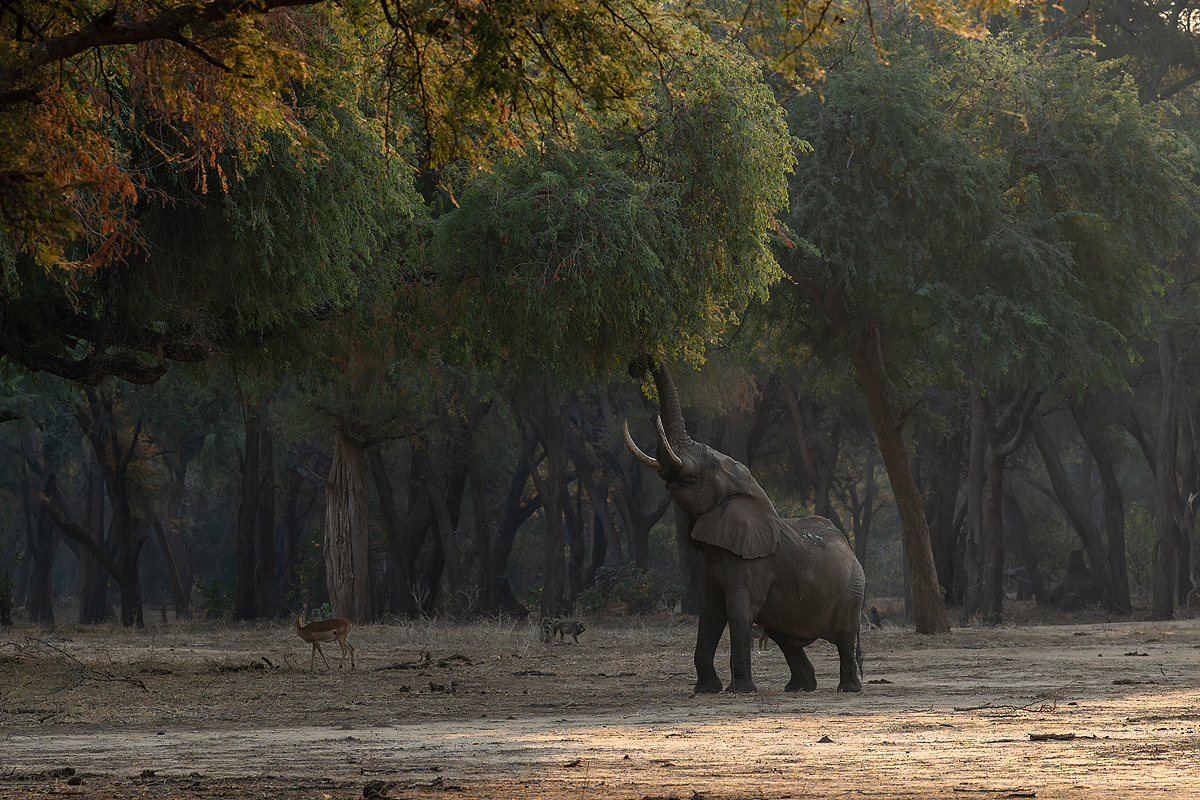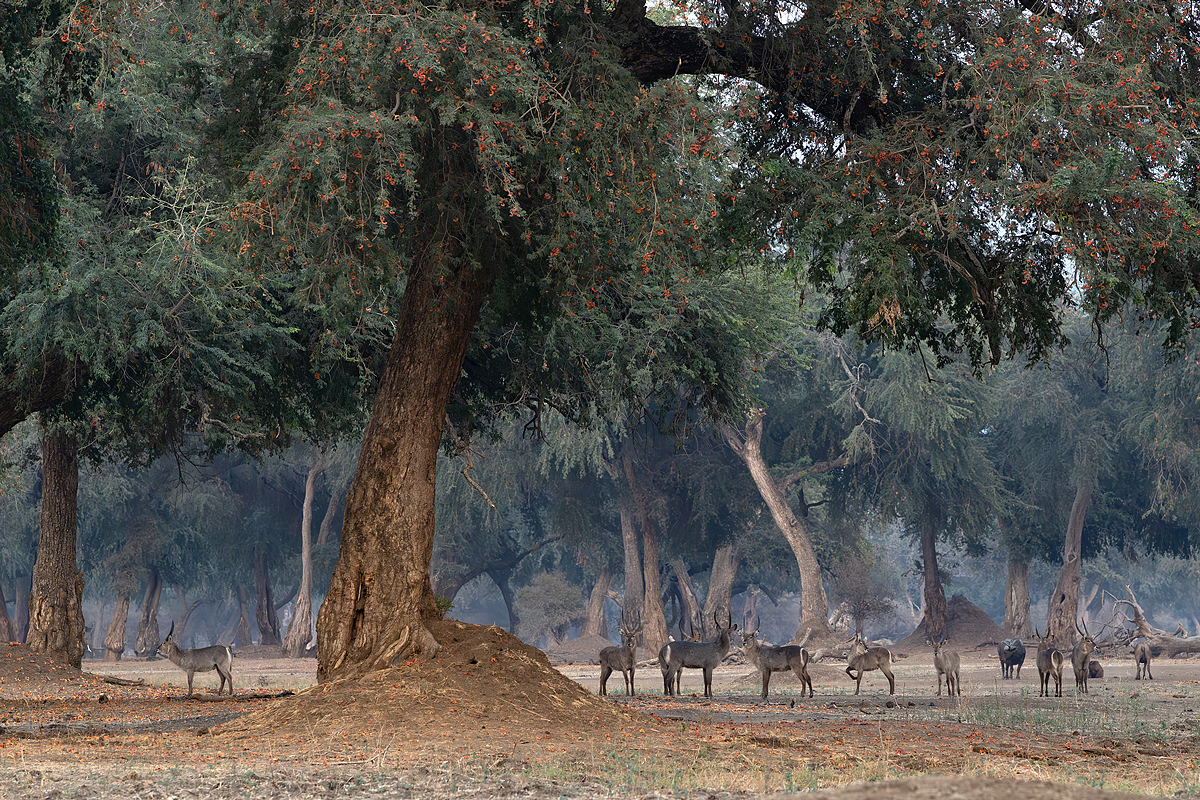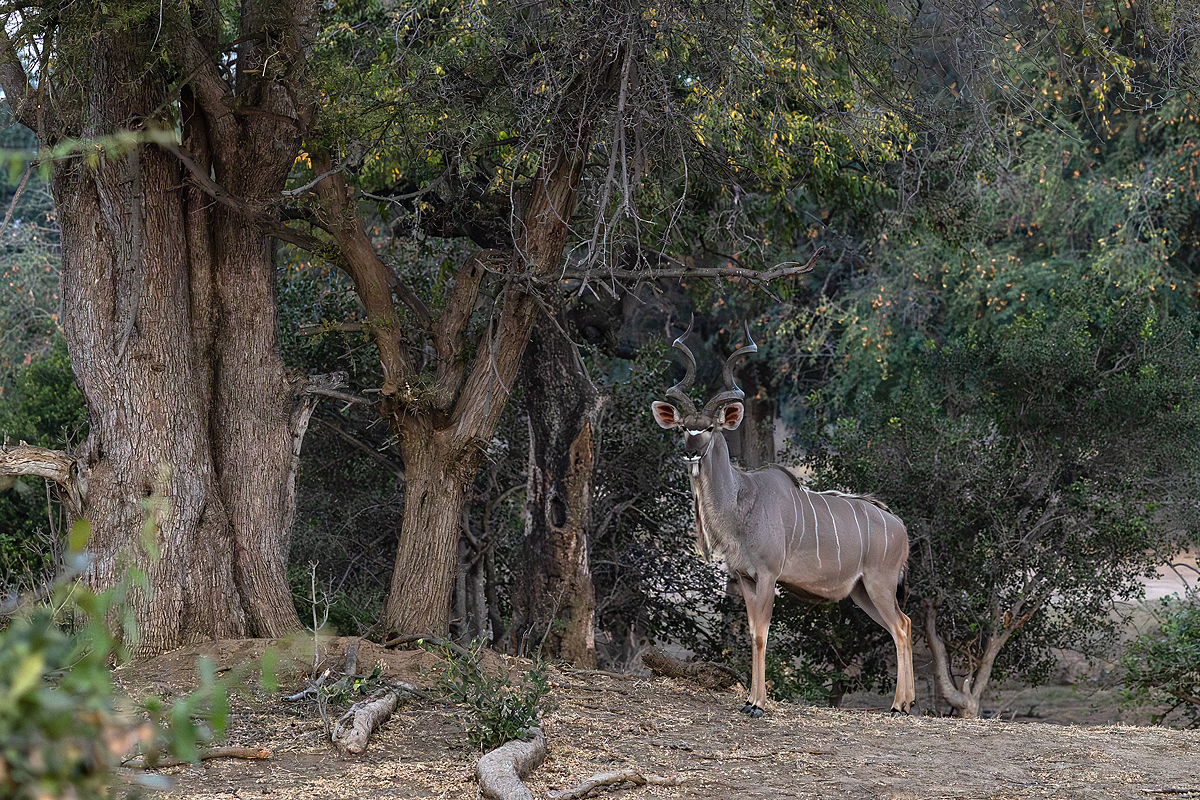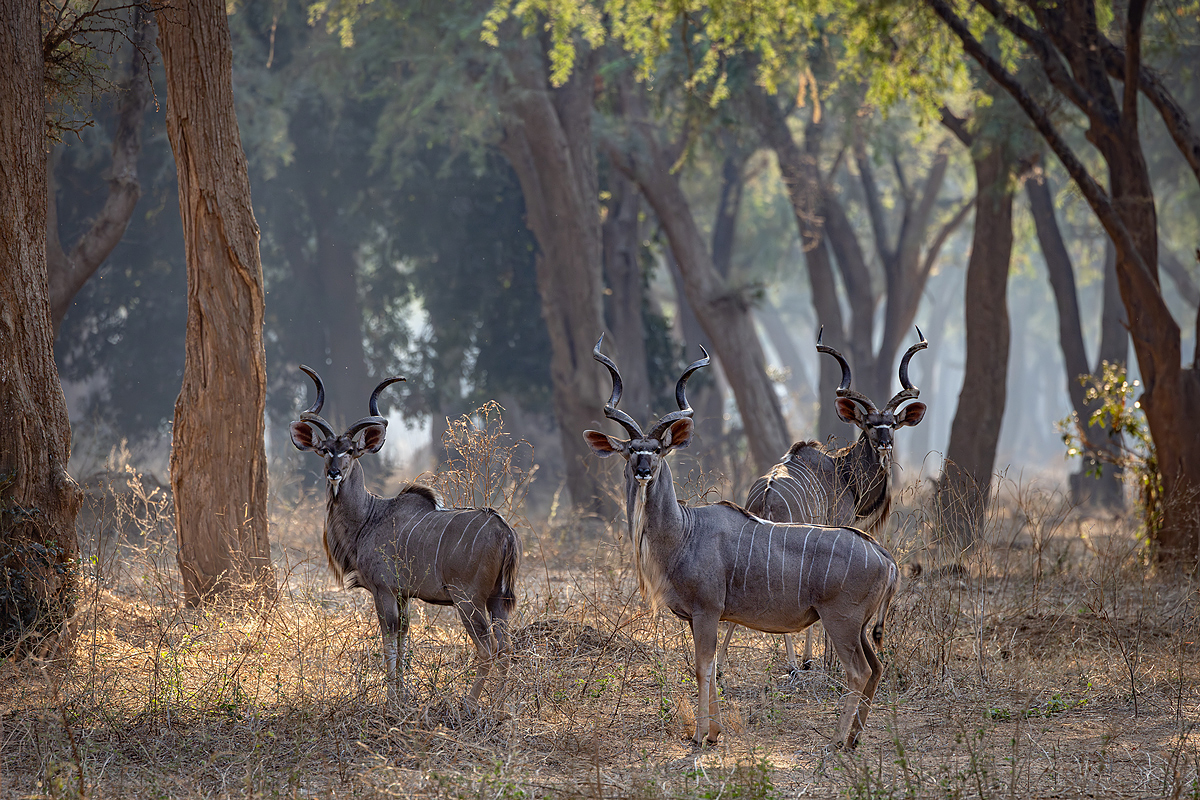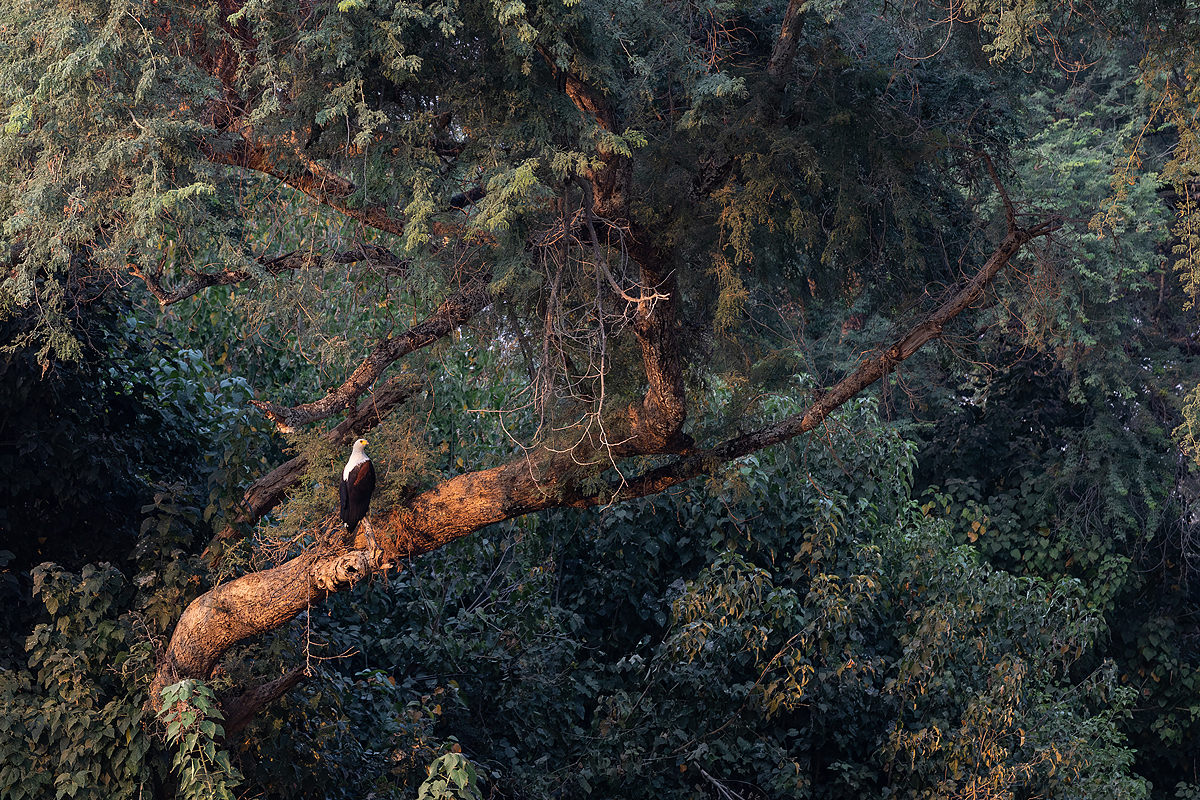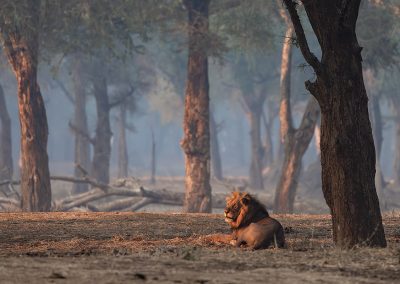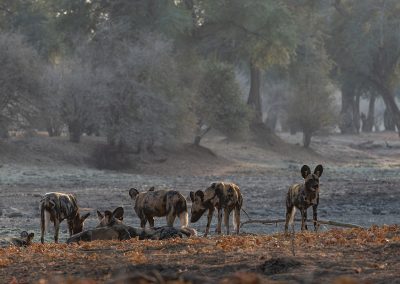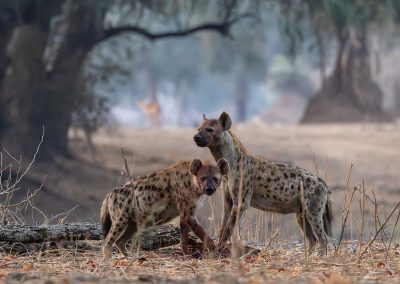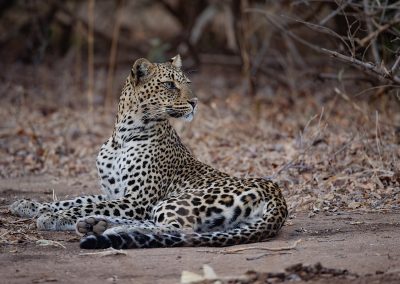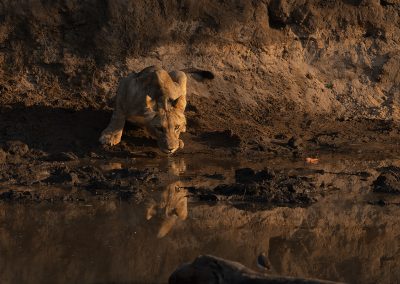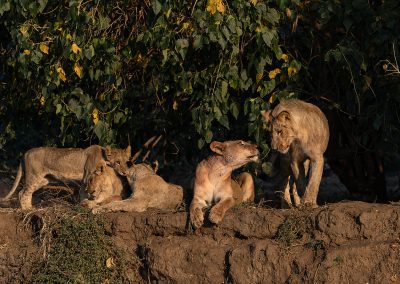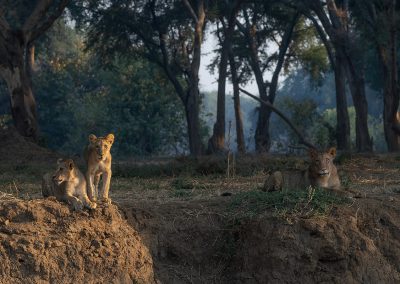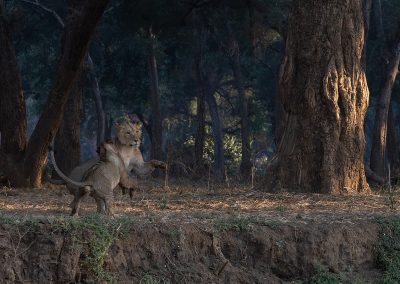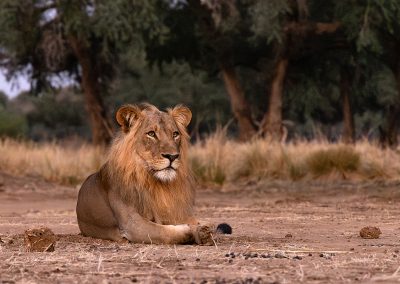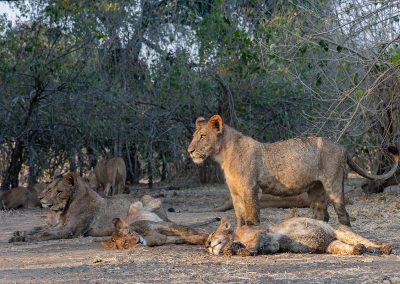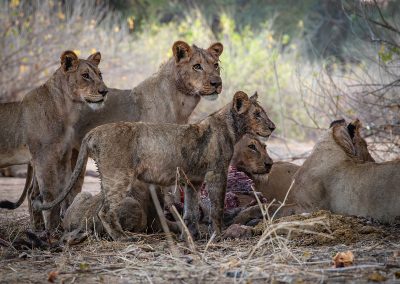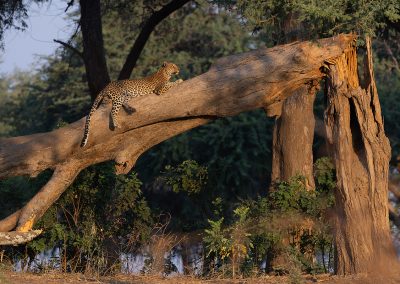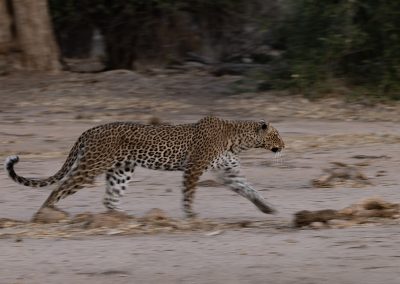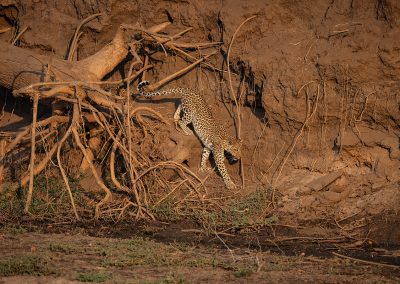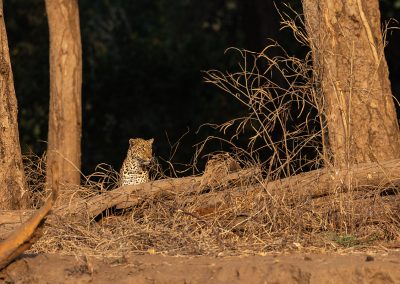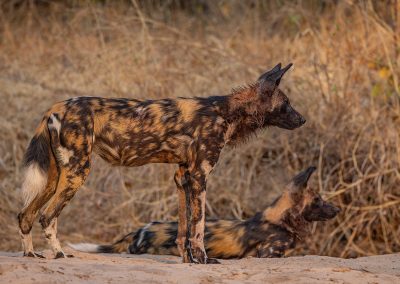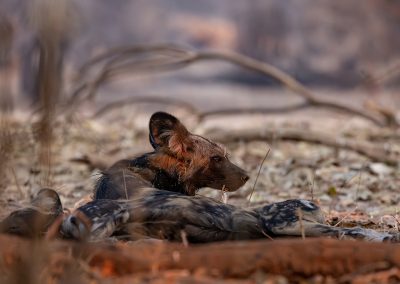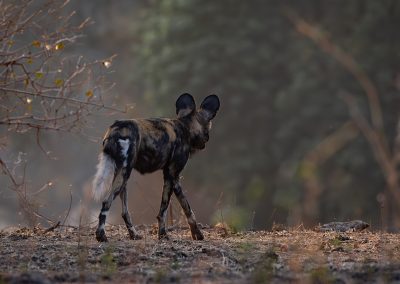Zambezi Valley animalscapes
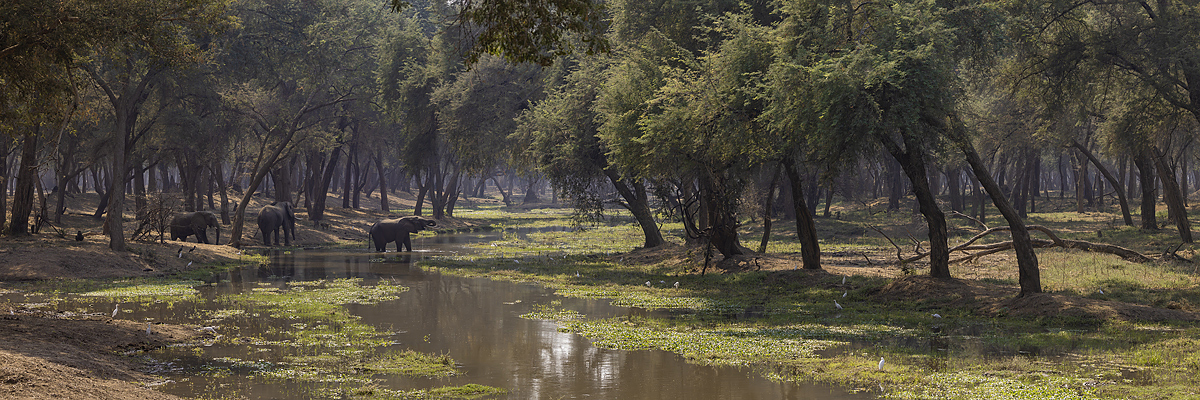
The Zambezi Valley is formed by the Zambezi river which flows through Zimbabwe, Zambia and Mozambique. The river with its many lagoons and channels covered in water hyacinths is a reliable source of water for the animals. The trees form an irresistible supply of dry-season browsing.
The current ecosystem in the Valley was formed after the building of the Kariba dam more than 65 years ago. The dam holds back the seasonal floods in Lake Kariba and has changed the course of the river and the former seasonal floodplains. Trees started to grow, which now form the famous winterthorn or albida forests.
The winterthorns have a so-called “reverse foliage cycle”, meaning that they shed their leaves in summer, and grow them again as winter approaches. They develop an abundance of highly nutritious pods, beloved by elephants in particular. They shake the trees and even stand on their hind legs to reach the pods. The forest creates a fairytale-like atmosphere, with golden light filtering through the canopy. The many fires in the nearby escarpment in combination with dust and moisture create the characteristic smokey blue haze in the forest.
We have visited the two national parks on the opposite shores of the river before, but this was the first time that we visited Lower Zambezi in Zambia and Mana Pools in Zimbabwe in one trip. Although our camps were only 40 km apart it took us two days of international travel to hop across the Zambezi river.
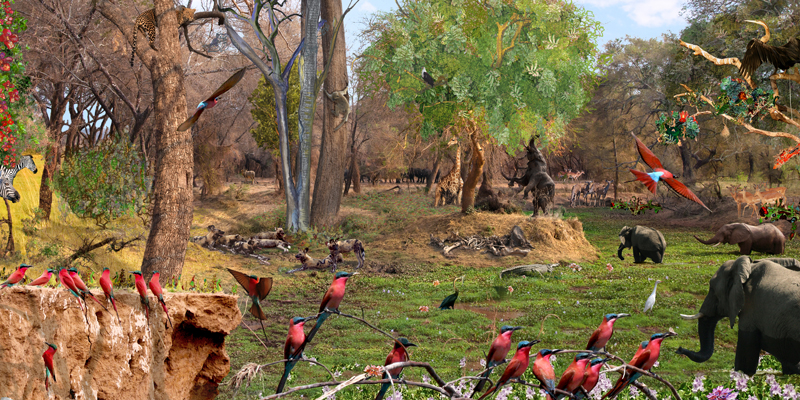
Back in Old Mondoro camp
It was special to be back in Old Mondoro after so many years. Here I worked on my first book Phanhabs Lush Bush in 2009. Some of the plates in the book were inspired by the lagoon, the beeaters, the forest and of course the elephants standing on their hind legs to reach the precious seed pods.
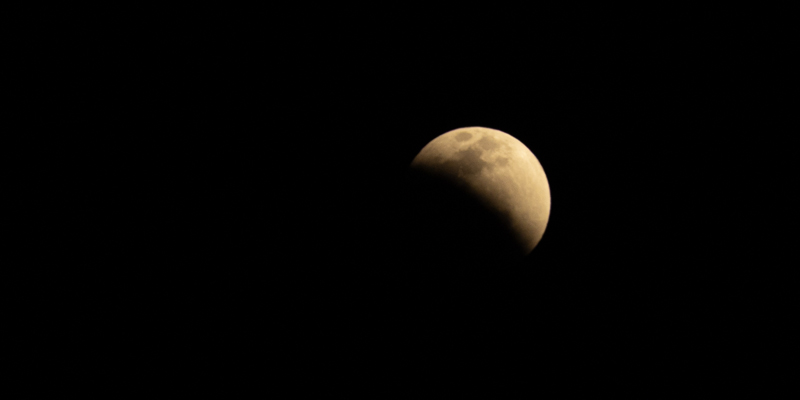
Lunar eclipse
During our stay in Old Mondoro we found out that there was to be a lunar eclipse. The moon was indeed shaded by the earth for hours. For us it was very special to witness this event around a campfire in Africa. And to enjoy the surprise bush dinner prepared by the staff under the stars.
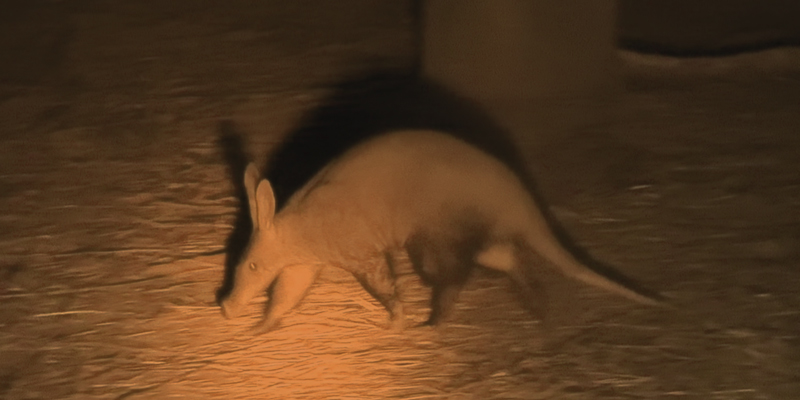
Secretive aardvark
Aardvark are shy creatures. They leave their holes during the night to look for termites to feed on. During the first week after a full moon the late rise of the moon creates the complete darkness they like. Therefore we were able to spot some of them with a non invasive red light.
Zoom out for animalscapes
The baroque forest with its blue haze, the arches, creepers and vines forms a magical setting for animalscape photography. The landscape surrounding the animals defines the story. The challenge is to capture the magic in a picture. You need to take a step back and zoom out, even though big lenses allow us to get close to an animal.
Animal kingdoms come and go
The boom and bust of animal kingdoms is part of nature. A few years back the wild dogs were ruling the forest of Lower Zambezi. A huge pack of more than 40 dogs was able to bring down buffalos. Since then the pack has split in three. Some are operating with a smaller group on the other side of the park, others are struggeling to reproduce or even survive. The lions and leopards are back in power, both trying to weaken each other whereever possible. Life is hard, even for the top A predators. The fittest surviver is king for as long as it lasts.

